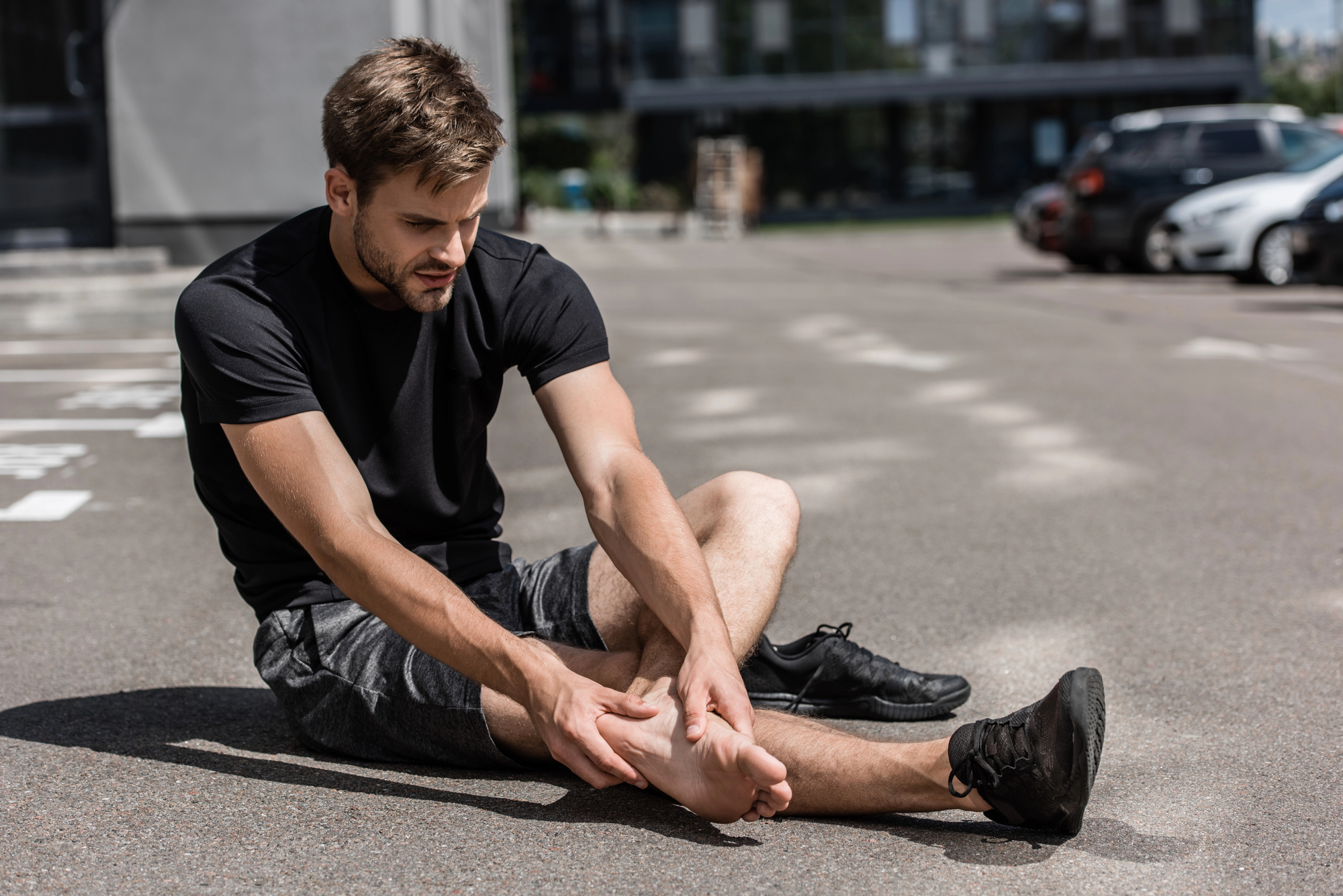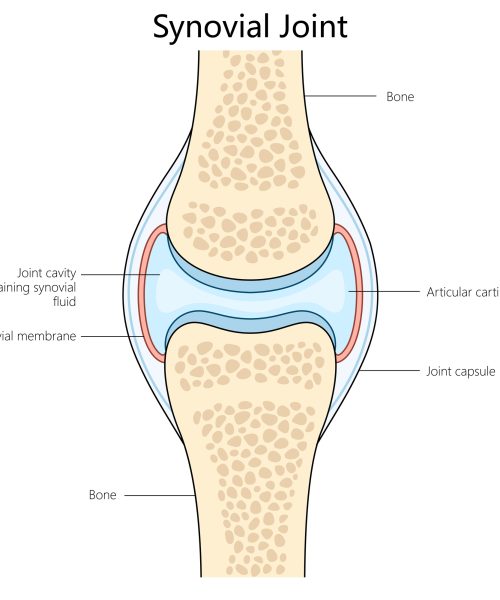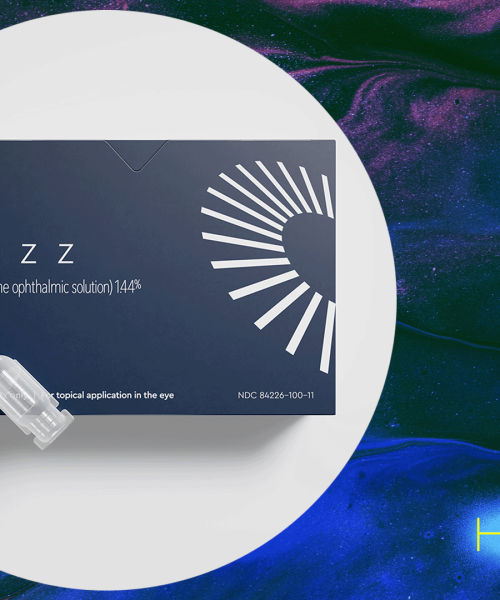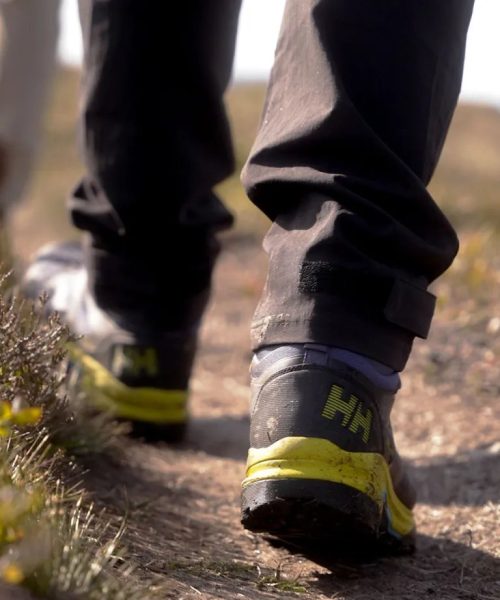Most of the time, feet are easy to forget. Hidden away in socks and shoes, and all the way at the bottom of our bodies, you’d be forgiven for not thinking about them much at all. But stumble into a particular zone of the online wellness sphere, and feet are the focus. Influencers frequently recommend toe spacers (or separators) to fix all sorts of problems, from bunions and blisters to back aches and poor athletic form. Can one small piece of silicone really have so many benefits?
Toe spacers aren’t a sure fix for all, but—for many people experiencing foot pain—experts suggest they may be worth a try.
Shoes have messed up our feet
Walk around barefoot and you might notice that your toes spread and flex as you walk. But we spend our lives in shoes, and shoes don’t allow for the same level of movement. Over time, that restriction (especially with pointed, stiff, or narrow shoes) can cause feet to shapeshift. Toes may start rubbing together or overlapping, and the muscles that barefoot walking would normally engage, weaken. “Shoes have been the downfall of foot strength,” Jay Spector, a podiatrist and fellow of the American Academy of Podiatric Sports Medicine, tells Popular Science.
In addition to overall weakening, shoes can trigger other issues. Improper footwear may cause or exacerbate bunions, protrusions of the big toe knuckles. Bunions can, in turn, lead to painful blisters or corns where squished toes rub against each other or a shoe, Grace Torres-Hodges, a podiatrist and foot surgeon tells Popular Science. The wrong shoes can even cause biomechanical issues like back pain and unstable gait. And there’s a longstanding debate in shoe design over what sneaker features best prevent athlete injuries.
Eschewing footwear entirely isn’t a practical response, given the necessary protection shoes provide our soles. Shoes are even important for disease prevention. But Spector and Torres-Hodges say it’s worth taking steps to strengthen and stretch our under-utilized feet—especially if you’re experiencing foot-related discomfort like hammer toe, arch pain, bunions, blisters, or plantar fasciitis. Both commonly recommend soft, silicone toe spacers (in addition to other interventions, like exercises, toe socks, and more forgiving shoes) to a subset of their patients.
But do toe spacers actually help?
In Torres-Hodges’ view, toe spacers can be helpful but they aren’t a fix-all. She says they’re most useful as a short-term fix for the friction between toes that causes blisters, corns, and unpleasant pressure, or as a way to retrain and re-align feet pre- and post-bunion surgery.
Spacers (alongside foot strengthening and avoiding restrictive shoes in the first place) can help prevent bunions from worsening or appearing in the first place, but Torres-Hodges is careful to emphasize that spacers don’t treat problematic bunions once they’ve developed. “They will not correct the deformity,” she says. They can help alleviate symptoms if paired with a proper exercise regimen. Even then, many severe bunion cases may require surgery.

If you have uncomfortable corns or blisters between toes, spacers can offer some immediate relief, even if they aren’t proven to correct the root cause. The passive stretch from spacers can also lengthen ligaments and engage foot muscles, Torres-Hodges says. She further notes some of her patients using spacers describe improvements in their balance and ability to detect and respond to uneven ground. She’s also open to the idea that spacers might even be able to help with knee, hip, or back pain.
The foot is the foundation of the body when standing, and “if your foundation is strong” then better bodily alignment is likely to follow, she explains. Yet Torres-Hodges also notes there’s little published research to support the theory.
Indeed very few studies assess the effects of long-term spacer use. Those that do have found mixed results. One 2024 study of the short-term effects of toe spacers on balance and ankle movement in healthy people found no impact. Whereas a prior study of people with gait imbalances did find that spacers help correct walking and improve stability and other research of stroke patients found similar benefits. It’s possible toe separators are useful for those with diagnosed walking difficulties, but less so for those with healthy strides.
For his part, Spector is enthusiastic about spacers. As a marathoner and running coach, he considers foot strength frequently from an athlete’s perspective. At the high performance level, every little bit matters to push someone’s speed over the edge and to minimize risk of injury. In his view, toe spacers can strengthen feet and correct toe alignment by engaging a set of foot muscles most people don’t use often.
Wearing spacers activates the muscles and ligaments that enable lateral toe movement, allow for toe spread, and ideally keep the big toe pointed forward. Walking, running, or otherwise training with those muscles engaged makes them stronger, he says. “If the foot is stronger, theoretically you’re going to perform better in any kind of running sport,” he notes. However, again, there’s very little research out there on how spacers affect foot strength and athletic performance. There’s not enough science yet to say if using spacers regularly or running with them will improve your form.
Related Health Stories
At least one study has shown toe spacers can shift lower leg muscle activation—potentially helping prevent or mitigate injury. And a handful of studies have indicated that combining spacers with foot exercise routines can boost foot strength and flexibility. Though, it’s worth noting the primary author of the largest review study summarizing those findings is affiliated with a shoe company that sells spacers.
“The jury is still out,” Torres-Hodges says, on whether or not passive toe stretching with spacers alone really boosts foot strength. The best results seem to come from using spacers alongside practicing intentional foot maneuvers, like toe lifts and grasping objects with your feet.
What is clear is that foot strength is important. Studies routinely indicate that better foot strength can reduce injury for everyone and fall risk in older adults.
Treading on uncertain ground
Outside of those with particular foot problems like bunions and gait abnormalities, there’s been relatively little scientific research into the long-term effects of wearing toe spacers. Both Spector and Torres-Hodges warn that those with neuropathy or who otherwise lack sensation in their feet should not use spacers, because of the risk of friction injuries, blisters, ulcers, and infection. But there’s little reason to expect they’re harmful for most healthy people.
As with most wellness trends though, there are disparate opinions about just how impactful a single intervention can be. Torres-Hodges says toe spacers aren’t necessary for everybody. “In general, the feet are really very resilient on their own. I’m a big believer you don’t fix what ain’t broke,” she explains. While Spector suggests most, if not all, people could benefit from the muscle activation separators provide. He also recommends regular toe exercises, or “toe yoga” as he calls it, and barefoot running (on safe surfaces, like a grassy field or a sandy beach—initially for short periods of time) to build foot strength.
Yet unlike so many of suggestions from TikTok influencers, silicone toe spacers are relatively affordable and easily purchased at most drug stores. They’re also washable and reusable. If you’re suffering from foot pain, a plateau in your running gains, or even just looking to get in a good stretch, toe spacers may be worth a try, says Torres-Hodges. If you intend to try them out, start slowly—a few minutes at a time—and make sure, if you wear them with shoes, your footwear is wide enough to accommodate the spread without discomfort. It’s possible you might feel a difference, just don’t expect them to be a podiatry panacea.
This story is part of Popular Science’s Ask Us Anything series, where we answer your most outlandish, mind-burning questions, from the ordinary to the off-the-wall. Have something you’ve always wanted to know? Ask us.






